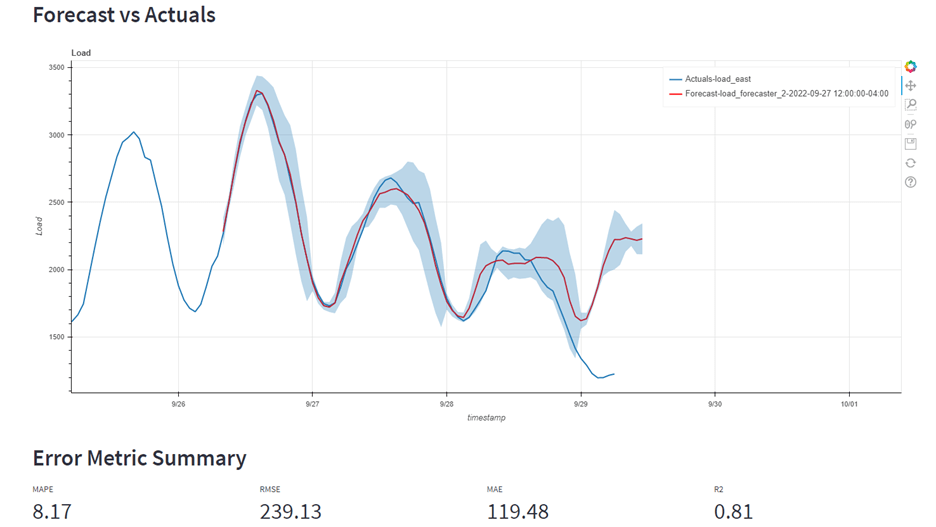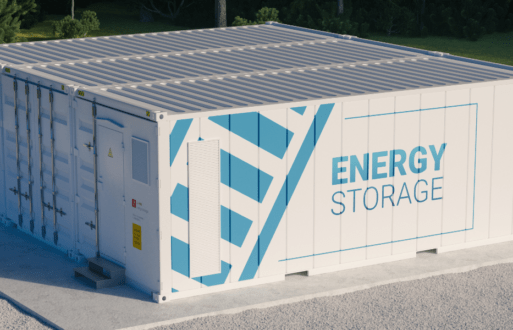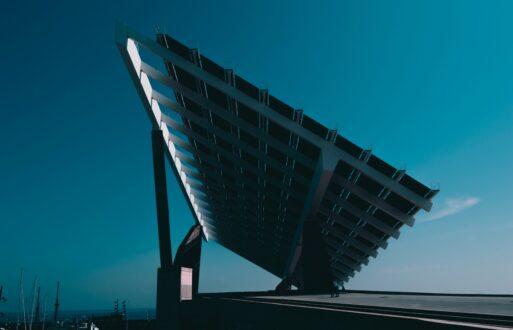As renewable energy sources like solar and wind power become increasingly prevalent in power generation, net load forecasting becomes more challenging. Net load forecasting refers to predicting the electricity demand after accounting for the electricity generated by renewable sources.
Net load forecasting challenges
One of the main challenges in net load forecasting with renewable supply is the variability of renewable energy production. Unlike traditional power generation sources, such as coal or gas-fired power plants, renewable energy sources are highly dependent on weather conditions, which can be unpredictable and highly variable. As a result, renewable energy generation can fluctuate rapidly and unpredictably, making it difficult to forecast net load accurately.
To address this challenge, net load forecasting models can incorporate data on energy supply from various sources, including renewable energy production, traditional power generation, and energy storage. This process can help provide a more accurate picture of the overall energy supply and demand situation and enable grid operators to make more informed decisions about energy production and distribution.
Net load forecasting presents a significant challenge for power system operators. However, by using advanced modeling techniques and incorporating a variety of data sources, it’s possible to improve the accuracy of net load forecasting and enable more efficient and reliable energy production and distribution.
What is load forecasting?
Load forecast accuracy refers to how well a load forecasting model can predict future electricity demand. Accurate load forecasting is essential for ensuring that electricity grids can supply the necessary amount of electricity to meet consumer demand while avoiding overproduction, which can lead to waste and increased costs.
There are several ways to measure load forecast accuracy, but two of the most used metrics are:
- Mean Absolute Percentage Error (MAPE) measures the average percentage difference between actual and forecasted loads. The lower the MAPE value, the more accurate the forecast.
- Root Mean Square Error (RMSE) measures the square root of the average squared difference between actual and forecasted loads. The lower the RMSE value, the more accurate the forecast.
The accuracy of load forecasts can be affected by various factors, such as weather conditions, seasonal patterns, and unforeseen events. To improve load forecast accuracy, it’s essential to use high-quality data, select appropriate model techniques, and perform effective feature engineering.
Additionally, it’s important to continuously monitor and validate load forecast accuracy over time and adjust the forecasting model accordingly. This can involve incorporating real-time data, such as weather reports and power outage data, into the forecasting process and revisiting and refining model parameters and features on an ongoing basis.
Overall, improving load forecast accuracy is an ongoing process that requires careful attention to data quality, model techniques, feature engineering, and ongoing monitoring and validation to ensure the forecasting model remains accurate and effective.
Read our full blog post to learn more: What is Load Forecasting?
Common machine-learning algorithms
Machine learning algorithms can be used for time series analysis and forecasting, with many techniques available for data and forecasting tasks. Commonly used machine-learning algorithms for time series analysis include:
- ARIMA (AutoRegressive Integrated Moving Average): ARIMA models are commonly used for time series forecasting tasks where data are non-stationary and exhibit a trend or seasonality. ARIMA models estimate the relationship between past and future observations using a combination of autoregressive, differencing, and moving average components.
- LSTM (Long Short-Term Memory): LSTM is a recurrent neural network (RNN) type that can effectively learn long-term dependencies in time series data. It is commonly used for tasks with a complex temporal relationship between inputs and outputs and where the data may contain seasonality or cycles.
- Prophet: Prophet is a forecasting algorithm developed by Facebook designed to handle time series data with multiple seasonality components. Prophet uses a decomposable time series model with three main components: trend, seasonality, and holidays. It can handle missing values and outliers in the data and is often used for business or economic data forecasting tasks.
- XGBoost (Extreme Gradient Boosting): XGBoost is a popular gradient-boosting algorithm that can be used for time series forecasting. It works by iteratively training decision trees on the residuals of previous trees, thereby reducing the prediction error at each iteration. XGBoost can be used with a wide range of input features and handle complex nonlinear relationships between variables.
- Random Forest: Random Forest is an ensemble learning algorithm that combines multiple decision trees to make predictions. It can be used for time series forecasting tasks to capture nonlinear relationships between variables and handle multiple input features.
- VAR (Vector AutoRegression): VAR is a model for analyzing the relationship between multiple time series variables. It assumes that each variable is a function of its past values and the past values of all other variables in the system. VAR can forecast multiple time series variables simultaneously and capture their complex interdependencies.
The choice of algorithm depends on the nature of the time series data and the specific forecasting task at hand. Different algorithms have different strengths and weaknesses, and careful selection and tuning are required to obtain accurate and reliable forecasts.
What is feature engineering?
In addition to these model techniques, feature engineering is another crucial component of load forecasting. Feature engineering refers to selecting and transforming input variables to improve the accuracy of a model. Some common feature engineering strategies used in load forecasting include:
- Time-based features: This includes features such as time of day, day of the week, and seasonality, which can help capture the patterns and trends in energy usage.
- Weather-based features: Weather has a significant impact on energy usage, and including features such as temperature, humidity, and wind speed can improve load forecasting accuracy.
- Holiday-based features: Holidays can also impact energy usage patterns, and including holiday-related features can help capture these changes in usage.
- Lagged features: Including lagged features, representing past values of energy usage or other relevant variables, can help capture the temporal dependencies in time series data.
- Moving average features: Using moving averages of energy usage or other relevant variables can help smooth out the noise in the data and identify trends over time.
Load forecasting model techniques and feature engineering strategies should be carefully selected and tailored to the specific needs of the energy management system. By combining the right techniques and strategies (called an ensemble), load forecasting accuracy can be significantly improved, leading to more efficient energy usage and better overall system performance.
But not always. One morning last September, I met with our machine learning development team to review accuracy metrics from a trial we conducted with a Florida utility. Results were stellar until the last few days when they went off the rails. They hadn’t been following the path of Hurricane Ian as it progressed up the Florida peninsula and were initially very confused at the sudden drop in model accuracy. Our utility friends were way ahead of us and had manually adjusted the forecast to reflect a significant falloff in load. This situation is very tricky with a storm like Ian approaching the coast at a shallow angle, as any small direction change can mean hundreds of miles of difference in where the storm makes landfall.

Electricity load forecasting software
Load forecasting becomes especially challenging during a hurricane or other severe weather event. Hurricanes can cause power outages, damage infrastructure, and disrupt standard usage patterns, making it difficult to predict electricity demand accurately.
Machine learning (ML) algorithms can be trained on historical data from past hurricanes and other extreme weather events to improve load forecasting accuracy during hurricanes. These algorithms can identify patterns and trends in electricity demand associated with these events and adjust load forecasts accordingly.
However, ML algorithms are not immune to errors, and several factors can lead to errors in load forecasting during hurricanes. For example, ML algorithms may not be able to account for unforeseen events, such as damage to power lines or other infrastructure, which can impact electricity demand. In addition, ML algorithms may be unable to capture all the complex relationships between variables that impact electricity demand during hurricanes, such as changes in usage patterns due to evacuations or emergency response efforts.
To minimize errors in load forecasting during hurricanes, it’s essential to use a combination of ML algorithms and other forecasting techniques, such as statistical modeling and human expert judgment. It’s also important to continuously monitor and update load forecasts as new data becomes available and to incorporate real-time data, such as weather reports and power outages, into the forecasting process.
Artificial Intelligence and Machine Learning applications rapidly penetrate our everyday lives, and load forecasting software is no exception. While ML algorithms can be a powerful tool for load forecasting during extreme events, they should be used with other techniques and continually evaluated and refined to ensure accurate predictions of electricity demand. Because this is a critical function and an essential input to PCI optimization models, energy trading shops often use more than one forecast service provider. We are now in the late stages of developing our load, wind, and solar generation forecasting algorithms designed for seamless integration into GenTrader and all our market solutions.
Contact us if you’re interested in learning more.






